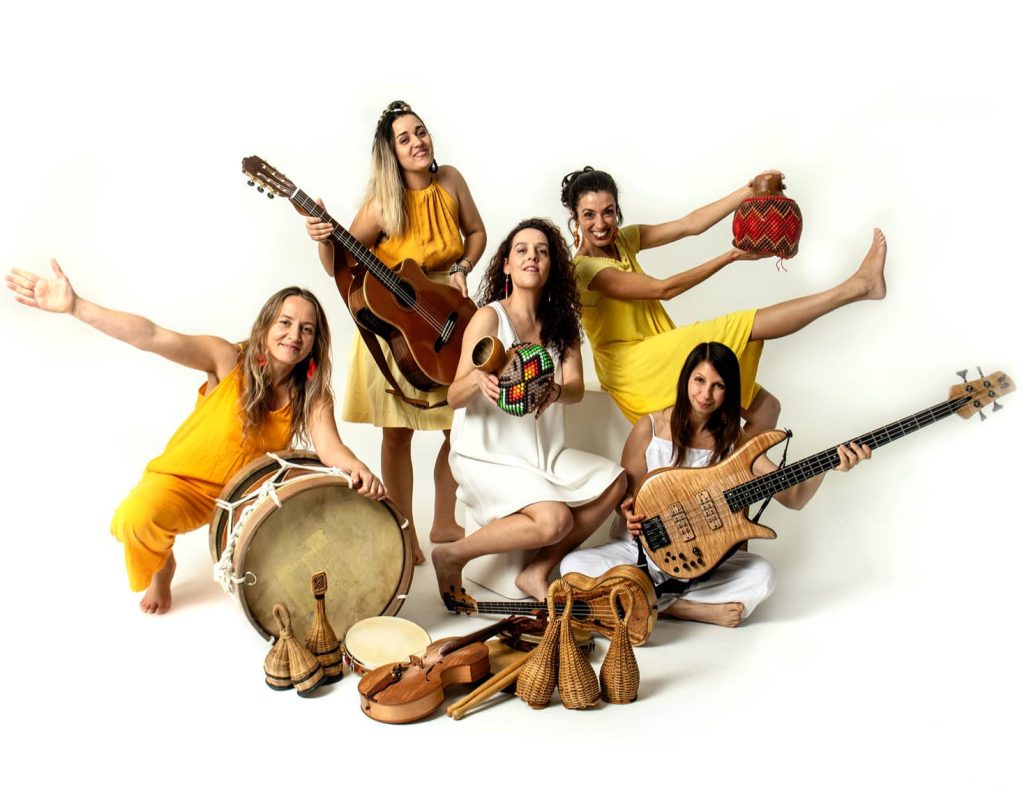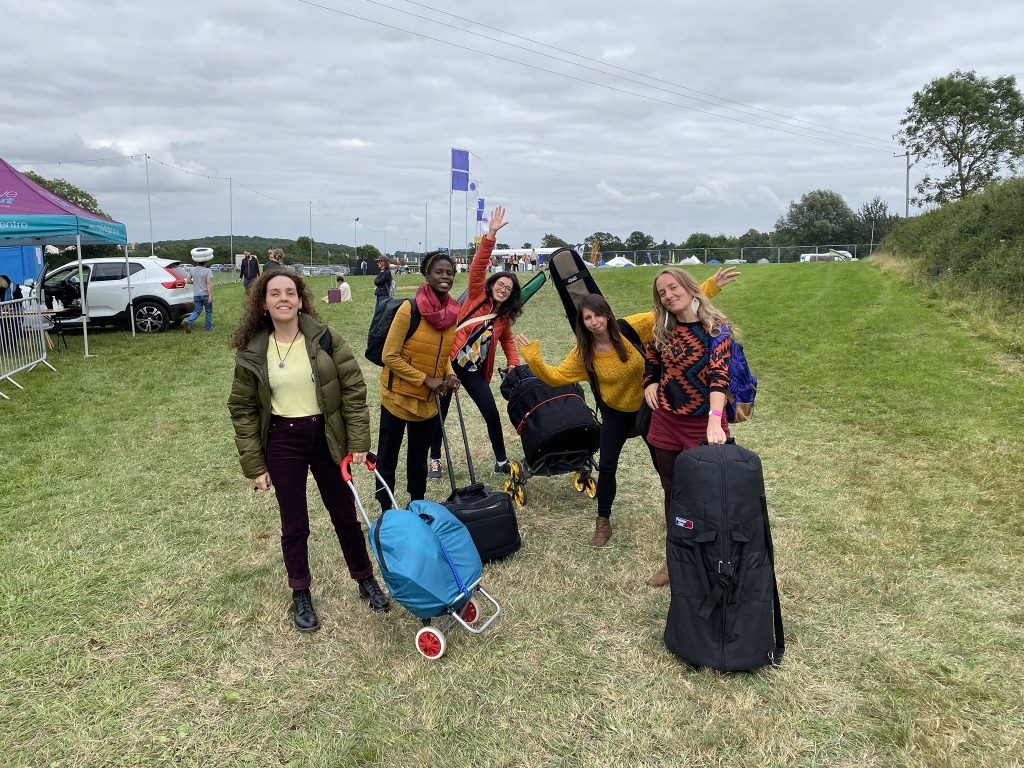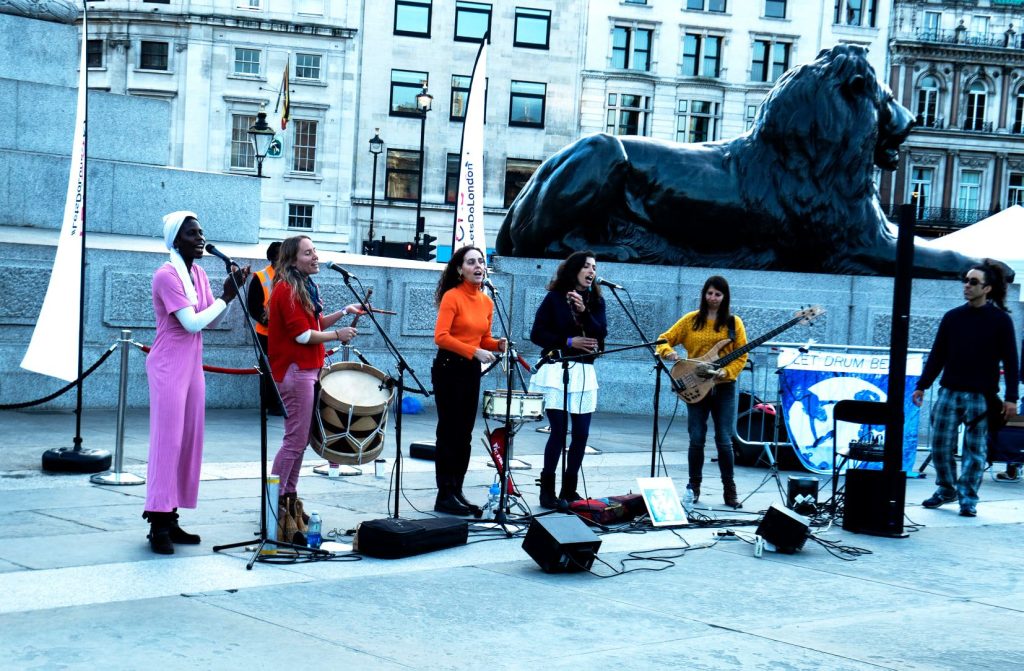Music is a leading indicator of equality—or at least it offers a taste of what a better world might be like. Jazz, rock & roll, flamenco and cumbia are just a few examples of sounds that integrated cultures, even when hard barriers kept races and classes from mingling. Perhaps no nation is more defined by its blended musical traditions than Brazil, and few artists have stepped into the mix with more imagination and flair than the London-based ensemble Let Drum Beat. Singer-songwriters Alba Cabral, Bea Shantifa, Lizzie Ogle and Tuca Milan are themselves a diverse group (Brazilian, French, Scottish) and their debut album, Lua Cheia (Full Moon) is a soothing, pulsing, bubbling almanac of Brazilian music-dance-performance genres that combine the country’s African, Indigenous and European heritages. With vocal agility backed by familiar strings, horns and keys, plus a cornucopia of drums, shakers, scrapers, claps, rattles and bells, the artists bring forró, maracatu, congado mineiro and bumba-meu-boi to life on a global stage. In addition to the parade of styles and instruments, they stir in polyglot cadences of Portuguese, Tupi-Guarani, French and Miná. Their songs invoke spiritual power and nature in seeking wisdom and in virtually demanding that listeners move their feet. Itacaraí (Sacred Stone, video 1) blazes a mystical path into a dance circle with a perfect balance of magnetic harmony and infectious percussion. The rabeca, a medieval Iberian fiddle, drives Forró dos Elementos (Elemental Forró, video 2) and Ebé Ubú (Womb Earth, video 3). Miawezon (Welcome, video 4), describes a joyous West African homecoming. In the title track, rhythmic voices and body percussion accompany a rising moon, its light dancing on the sea (video 5). The women of Let Drum Beat find sisterhood in composing individual musical impulses into a collective sound, and Lua Cheia is an invitation to visit their enchanting universe.
Let Drum Beat
Let Drum Beat are a London-based band who come together from diverse backgrounds – Brazilian, West African, French and Scottish – resulting in a unique sound that merges their musical heritages. Led by female percussionists, the band is also an exploration of musical sisterhood and cross-cultural creativity. Their original compositions are heavily inspired and influenced by Afro-Brazilian and Brazilian rhythms, with lyrics sung in Portuguese, indigenous Tupi-Guarani recreated verses, French and Mina (Benin).





